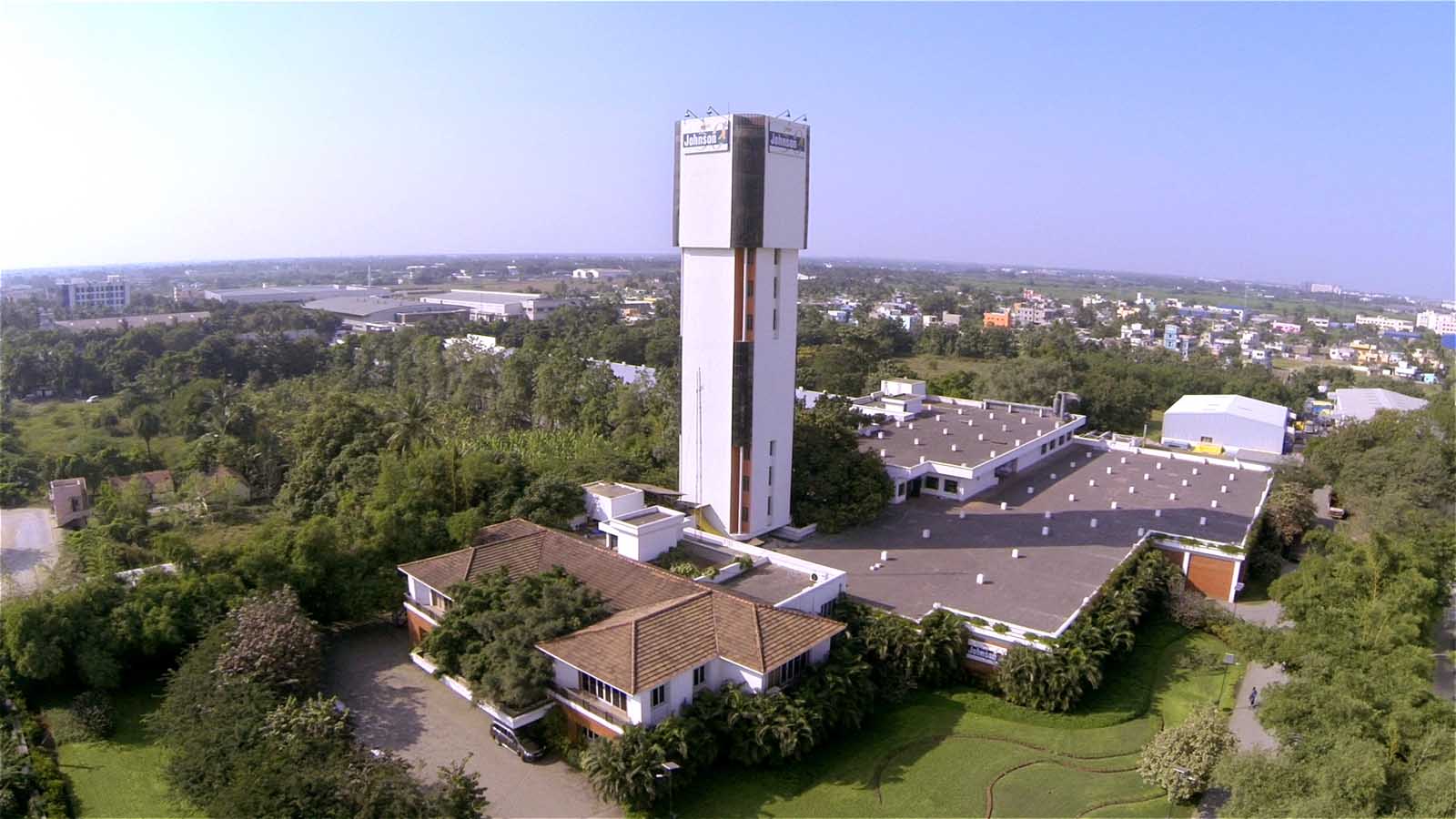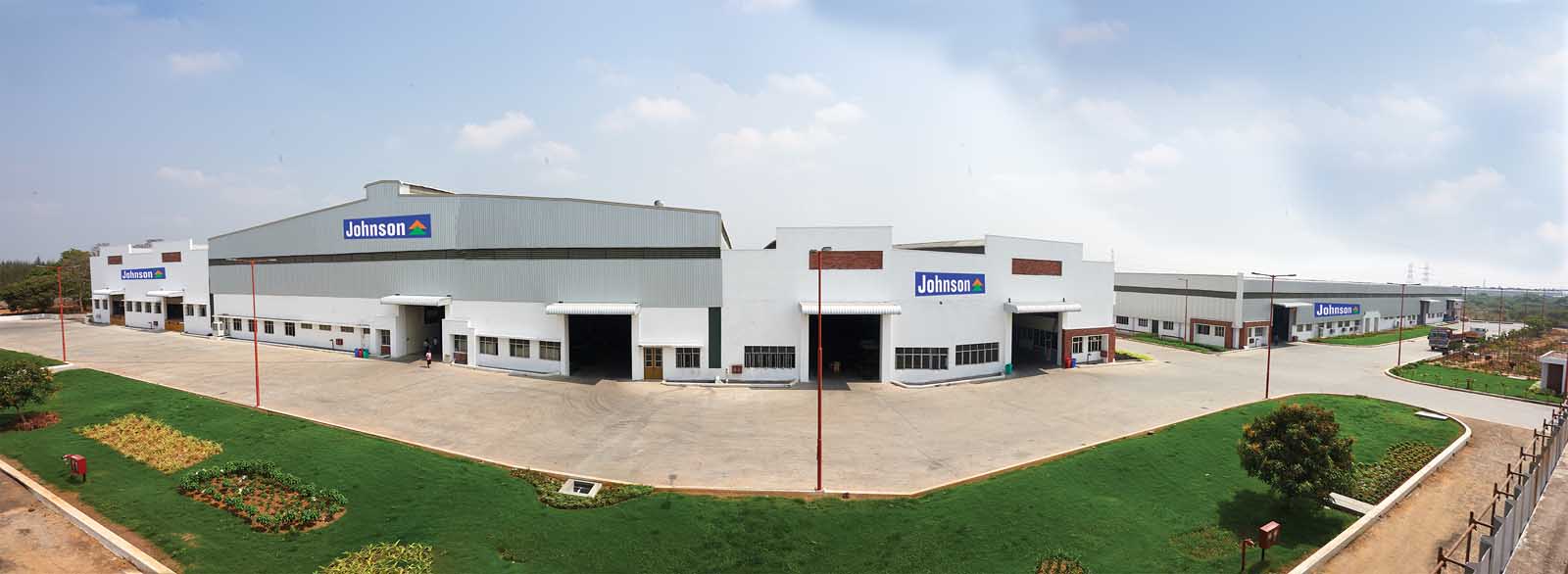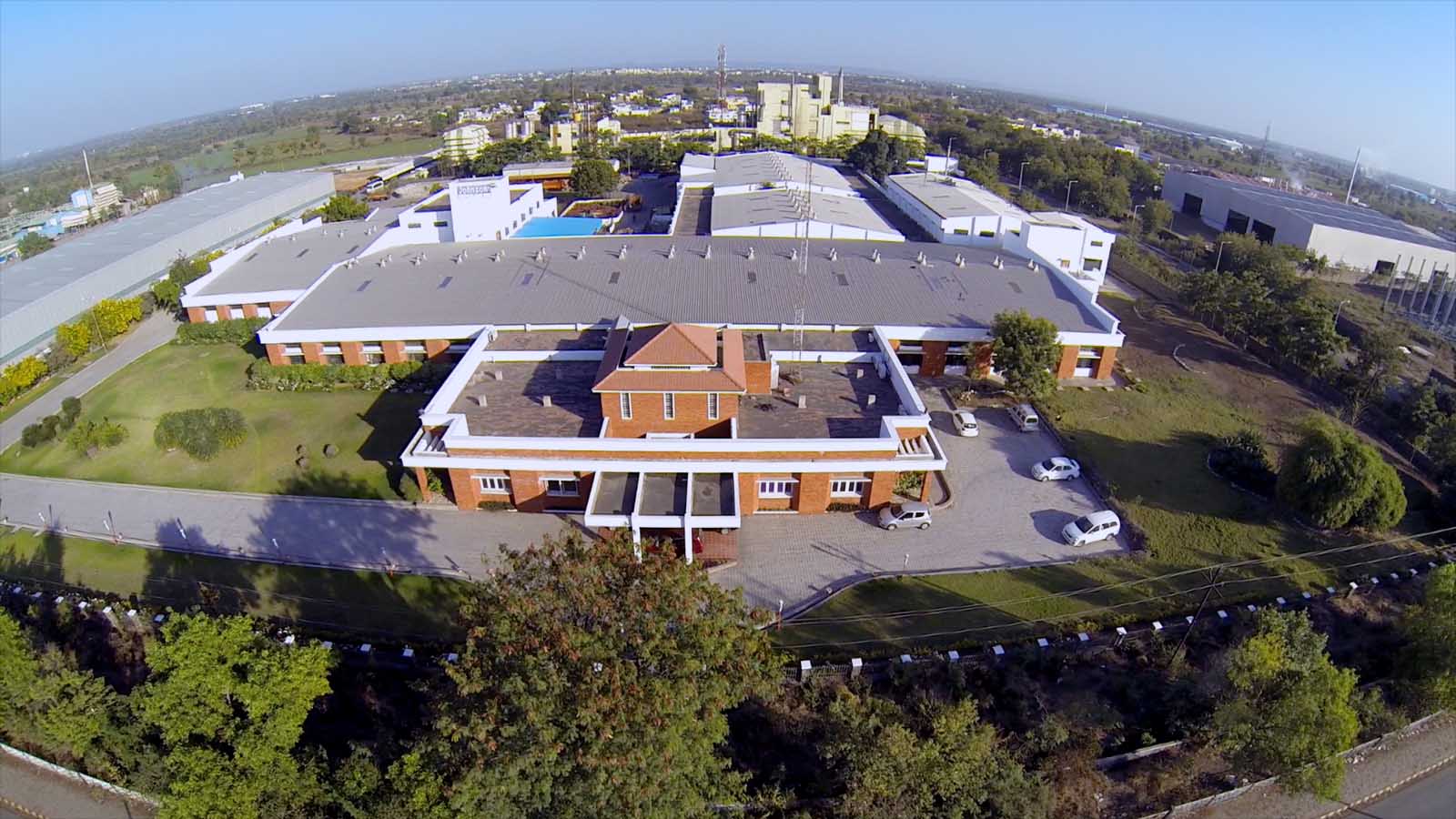Johnson Lifts Director Yohan John (YJ) shares insights with your author (SSP) on the company’s development and progress over the decades.
SSP: How would you describe the evolution and growth of Johnson Lifts Pvt. Ltd.?
YJ: Johnson Lifts, founded by my grandfather, K.J. John, embarked on its journey in 1963, specializing in the installation and manufacturing of an exceptionally reliable product: lifts. At the time, due to a limited vendor base, we took the initiative to develop and manufacture various essential components in-house at our Vyasarpadi factory in 1968. These components included safety gear, door locks, governors, guide rails, machines, mechanical controllers and their respective internal components. Within a decade, we successfully developed a market-ready product with a wholly indigenous design, without ever resorting to imitating other companies. What makes this product truly exceptional is its continuous capacity to foster innovation and improvement, thereby expanding our horizons.
During the 1960s and 1970s, demand for lifts was relatively low — typically in the single digits. Lifts were built manually in-house using components that we developed ourselves. At that time, the market was characterized by a limited number of players, with just two major companies and a couple of local ones operating in the Southern region, particularly in Tamil Nadu, Kerala and Karnataka. In the 1970s, we were renowned for producing highly reliable, safe and user-friendly single-speed lifts equipped with collapsible gates, with capacity ranging from six passengers to 3000 kg. However, as technology began to evolve in the 1980s, the elevator market saw the entry of several new companies. This technological shift prompted us to upgrade our product line, transitioning from collapsible gates to automatic doors. This transition was not without its challenges, as local vendors for the required components were scarce. In the 1980s, we also pioneered the development of a microprocessor controller for our single-speed lifts with collapsible gates. This innovation allowed us to eliminate the use of numerous mechanical parts, streamlining our product.
In 1984, we marked another significant milestone by relocating to our new facility in Ambattur. Adding V.M. Thomas, our joint managing director, to our team the same year played a crucial role in easing production bottlenecks and improving overall efficiency. Four years later, in 1988, we were further strengthened by the addition of K. Subramaniam, who facilitated the production of new electronic controls, enhancing our capabilities.
In the 1990s, the rise of liberalization opened up markets to global players across various industries in India. In the elevator industry, we took a quantum leap from manufacturing single-speed lifts to AC variable voltage variable frequency (VVVF) controllers. This strategic move allowed us to compete on a global scale, without looking into two-speed or DC variable voltage systems. We proudly stand as pioneers in introducing VVVF lifts for both collapsible gates and automatic doors, a significant leap forward. The inclusion of automatic doors enabled us to cater to a new and different segment of customers.
In 1997, we reached another milestone with the construction of our Poonamallee factory, purposefully designed to house an R&D facility equipped with a 155-ft-high test tower. This expansion allowed us to introduce lifts with a speed of 1.5 m/s, directly competing with major European and Japanese companies. Also, by this time, we had set up offices in other states including Andhra, Karnataka and Kerala. We acquired large contracts in these areas in the low-rise segments. During the same period, we extended our installations beyond the Vindhyas, spearheaded by our Executive Director V. Jagannathan.
The year 2000 witnessed the introduction of permanent magnet motor gearless machines, and we were quick to embrace this innovation in 2004. Initially, we built our own motors, and later strategically sourced the vendors that would exclusively supply to us. This ensured that we were well-prepared, both in terms of products and processes, to meet elevator demand in the 2000s. In parallel, we ventured into the escalator business, closing the gap in our product portfolio within the vertical-transportation (VT) industry.
Our commitment to growth and innovation is reflected in the continuous expansion and enhancement of our production facilities. We currently operate four state-of-the-art factories strategically located in Poonamallee (1997, 47,000+ sq. meters), Oragadam (2010, 57,000+ sq. meters), Sengadu (2017, 139,000+ sq. meters) and Nagpur (2003, 56,600+ sq. meters). This substantial infrastructure expansion is complemented by our continuous investment in R&D, which encompasses new technologies, product development and machinery enhancements. These investments have been instrumental in establishing us as one of the largest and most advanced elevator companies in the country. Throughout our 60-year journey, the commitment to self-reliance has remained a fundamental pillar of our success. Our people have always been the cornerstone of our strength. Through their dedicated efforts, we have consistently delivered prompt and exceptional service to our customers. At various junctures, key individuals joined our company, bringing about significant and positive transformations. Our customers also have consistently recognized the value of our products and the excellence of our after-sales service, often being willing to pay extra for these qualities. As a result, the industry has granted us not only a stable product line, but also a loyal customer and client base characterized by unwavering loyalty. We are the preferred choice for our customers in the regions where we operate — a testament to the trust and satisfaction we have consistently delivered. We take pride in being recognized as “A Good Indian Company With a Global Presence,” emphasizing our commitment to excellence on a global scale, rather than being called an Indian MNC (multinational company).
SSP: To what extent does this reflect upon or draw parallels with the evolution and growth of the VT industry in India during the same period?
YJ: The 1980s and 1990s marked a period of continuous change and evolution for our industry. With the opening up of the economy, competitors entered the market and began manufacturing. Throughout these transformative years, we remained steadfast in our commitment to quality across all our products. This dedication allowed us to carve out a special status for ourselves in the market, distinguishing us as a trusted and reliable choice.
SSP: What were the key challenges faced during this journey?
YJ: There were several. These include:
Limited vendor base: During the 1960s, 70s and 80s, we faced a significant challenge due to the absence of a reliable vendor base for raw materials and components. Unlike today, government support for micro, small and medium-sized enterprises was scarce.
Raw material procurement: Acquiring raw materials from the overseas market was a cumbersome process, characterized by quotas and long queues, making it a challenging endeavor.
Technological constraints: We had to rely on in-house technology, which posed limitations in keeping up with technological advancements in the industry until the 2000s.
Small market: The lift market at the time was exceedingly small, with manufacturing primarily in single or double digits. Only one major lift company operated with three-digit production.
Domestic player status: Despite being a domestic player with limited reach, our presence was never thinly spread across the markets in which we operated. This drove our determination to deliver excellence wherever we established ourselves.
SSP: What was the strategic approach toward overcoming these challenges?
YJ: Our strategy revolved around providing products of superior quality and safety compared to the competition. Despite being perceived as hyper-local and lacking in technology and financial prowess compared to larger companies, we remained resolute in our commitment to excellence.
SSP: What are some of the major milestones accomplished by Johnson Lifts over the years?
YJ: These can be generally grouped into three categories. They are:
Technological advancements: Over the years, Johnson Lifts achieved several significant technological milestones, including the introduction of microprocessor controllers, VVVF controllers and permanent magnet gearless machines. These innovations removed barriers and positioned us as industry leaders.
Production infrastructure expansion: Our journey began in 1963 with a modest 2,400-ft2 facility. Now, we have expanded our production infrastructure to a total area of an impressive 3.2 million ft2. Continuous investments in machinery and R&D have played a pivotal role in establishing Johnson Lifts as a leader in the industry.
Customer base: Our installation base spans various segments, including hotels, airports, metros, educational institutions, railways, hospitals and government projects. Notable among our prestigious government projects are the New Parliament House, Statue of Unity, Reserve Bank of India facilities, All India Institute of Medical Science buildings and more.
SSP: What sets the company apart?
YJ: There are two main factors. They are:
- High-quality after-sales service: With a network of 184 service centers across various regions, we provide high-quality after-sales service. This local support ensures that lifts installed by us are meticulously maintained, ultimately prioritizing customer satisfaction.
- Customer retention: Our unwavering belief in customer retention is a core aspect of our business philosophy. We firmly adhere to the principle, “Once a customer, always a customer.” This customer-centric approach underscores our commitment to forging long-term relationships and exceeding customer expectations.
These milestones and core values have propelled Johnson Lifts to a prominent position in the industry, reflecting our dedication to innovation, quality and customer satisfaction.
SSP: How do you see factors like technology upgradation, safety, access controls, mobility solutions and integration of VT within buildings influencing market trends in 2024 and beyond?
YJ: We consider technology upgrading to be an ongoing and ever-evolving process, regardless of the era. From our inception, safety has remained our paramount concern, encompassing the well-being of our employees and the safety of our customers. Our dedication to these principles drives us to continually seek ways to progress and compete at the highest level. With a global presence, we recognized the growing demand for technology, especially in emerging markets. Our WATCH IoT product has been deployed, and approximately 1,000 units are operating, demonstrating our commitment to staying at the forefront of innovation and meeting the evolving needs of our customers.
SSP: Johnson Lifts is a leading VT provider to segments including infrastructure. What will be your focus areas going forward?
YJ: India is currently undergoing a substantial phase of infrastructure development, particularly in railways, metros and airports. We have already been involved in 16 metros. To further strengthen our commitment to infrastructure development, we have established a dedicated team that works exclusively and continuously on projects within this segment.
SSP: How would you define your vision for Johnson Lifts going forward?
YJ: We aim to:
Develop in-house products with speeds of up to 5 m/s, setting new standards.
Expand into the Middle East and Africa, leveraging our Indian expertise and strengths to lead in these regions.
Drive innovation through extensive R&D by investing heavily in creating indigenous products that cater to high-rise segments worldwide. Our focus also extends to smart elevator technology to enhance user experience and operational efficiency.
Get more of Elevator World. Sign up for our free e-newsletter.









